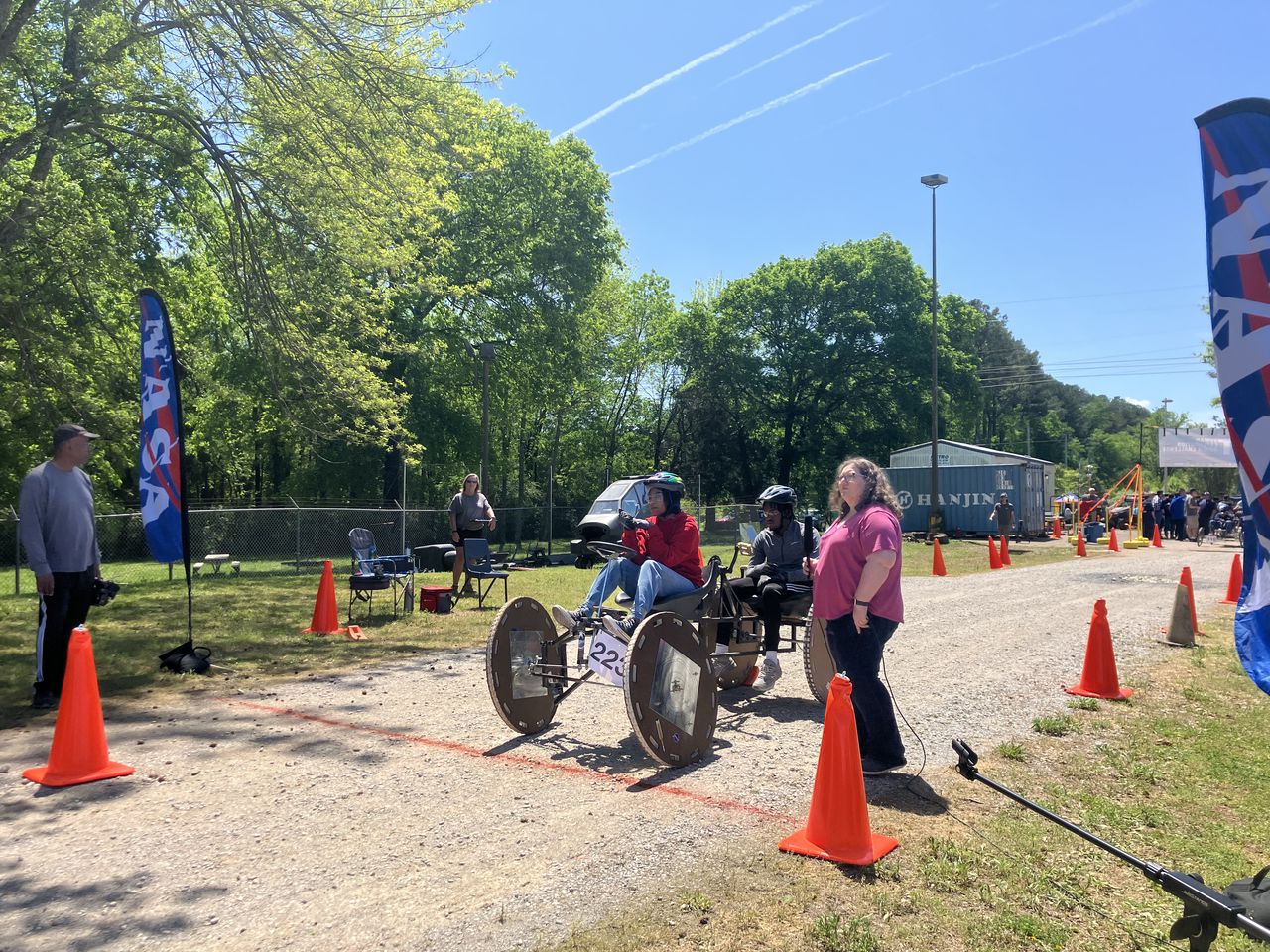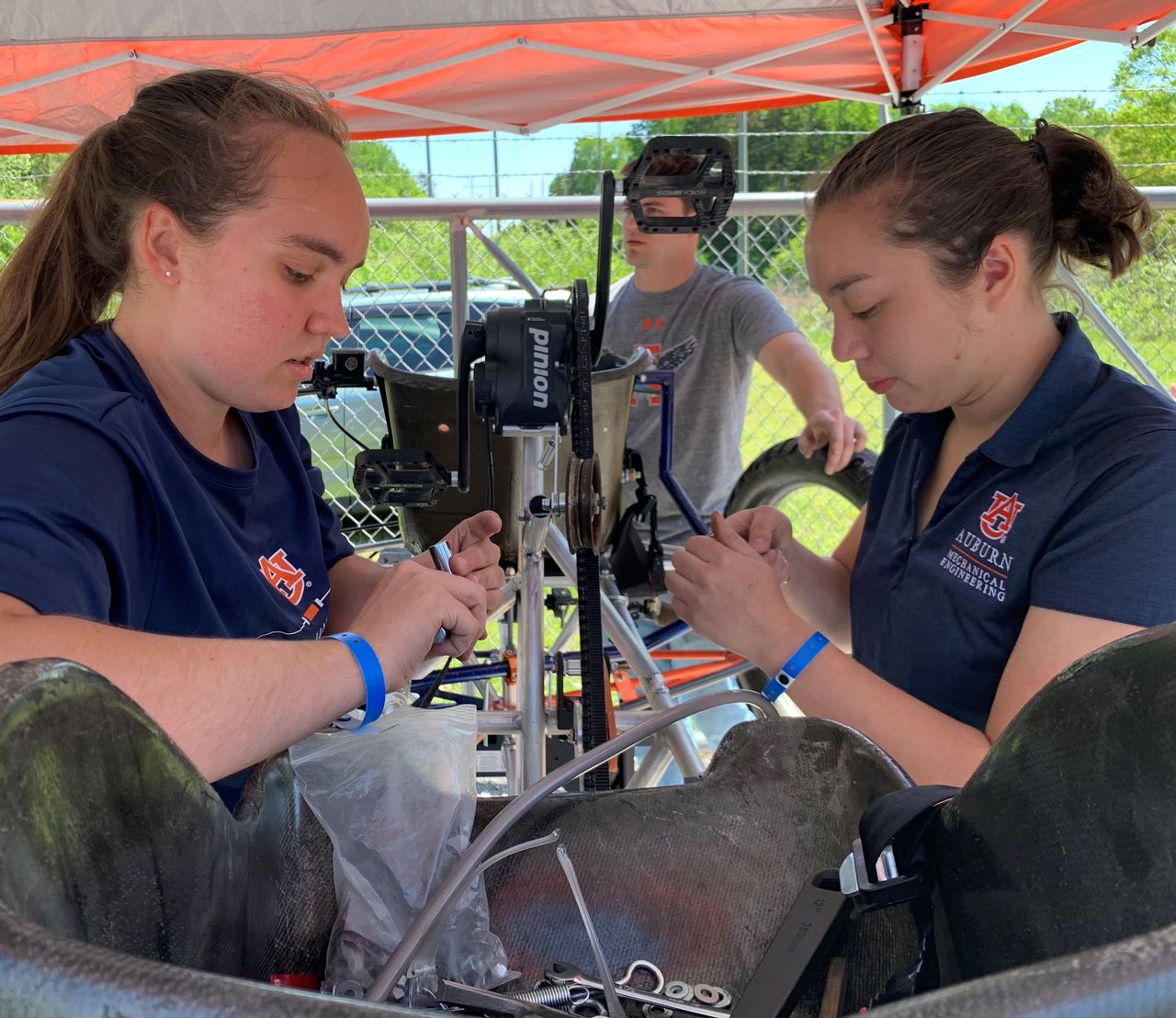NASA’s space rover competition comes back strong in Alabama after pandemic
What do Puerto Rico, Mexico, Washington, D.C. and Auburn have in common? This week, its student teams racing in NASA’s Human Exploration Rover Challenge at the U.S. Space & Rocket Center.
Canceled for three years by the pandemic, the popular annual competition came back strong with 48 teams – 20 of them international, the rest from 16 U.S. states – and more than 500 student competitors.
Their mission was to design and build a human-powered rover to race around an obstacle course. The real lunar rovers astronauts used on the moon were developed at NASA’s Marshall Space Flight Center here.
“We think our design is really solid,” Auburn University mechanical engineering student Charles Rainero said as team members Chella Rossel of Huntsville and Emily Broome of Birmingham used hand tools to make adjustments to their rover under a canopy.
Auburn mechanical engineering majors Chella Rossel, left, of Huntsville, and Emily Broome of Birmingham make adjustments to the university’s entry in NASA’s 2023 Human Rover Challenge at the U.S. Space & Rocket Center in Huntsville, Ala.
“Yesterday, our main issue is our (drive) belts are so long,” Rainero said. “There wasn’t enough tension close to the top sprocket. So, when the drivers would pedal hard, it would knock the belt off the sprocket and that’s a time-consuming process to replace that on the course. We’ve fixed the front. No way it’s coming off. We just have to finish the back.”
Garbriel Burgos, captain of the University of Puerto Rico Mayaguez’s team, said his school’s team won the last competition in 2019. “Expectations are high and there have been a lot of difficulties in our path, especially the hurricane,” Burgos said of the 2022 storm that hit the island.

A team gets ready to start the course at NASA’s Human Rover Challenge in Huntsville, Ala., April 22, 2023. The challenge returned to the U.S. Space & Rocket Center competition grounds for the first time since the COVID pandemic.
The Puerto Rican team’s rover was “100 percent made by us,” Burgos said. “It’s carbon fiber and fiberglass, the tread is industrial rug glued on there. We made everything but the shock absorbers and belts.
Burgos got an internship with General Motors from being part of the team, and the company is also a sponsor of their program. “Props to them,” he said. “I really appreciate them.”
If he does have an issue, Burgos can get on the phone with past captains for advice. Two of those captains already work for Boeing.

This team from Mexico paused April 22 for a group photo at NASA’s Human Rover Challenge at the U.S. Space & Rocket Center in Huntsville, Ala.
After the conclusion of the races, NASA holds an awards ceremony at the Space and Rocket Center’s National Geographic Theater. NASA presents trophies and plaques to the top teams, and three corporate sponsors provide cash awards to both college and high school teams in three categories: pit crew; safety; and most-improved performance. The cash awards are $500 for both pit crew and safety and $250 for most improved.
“It feels great to see the smiles on the students’ faces, to see them facing setbacks and bounce back and change their rover and tweak things to be more competitive in the second round,” said Kevin McGhaw of NASA’s office of STEM engagement.
“It’s an amazing partnership with this community,” McGhaw said. “The reason it happens here is the community rallies around from the Space and Rocket Center to the sponsors to the folks in this community like the National Space Club. All of these groups come together to support this effort. It’s something we don’t want to lose and are so grateful for.”
The results and more photos of the event will be available Monday at nasa.gov/roverchallenge.
